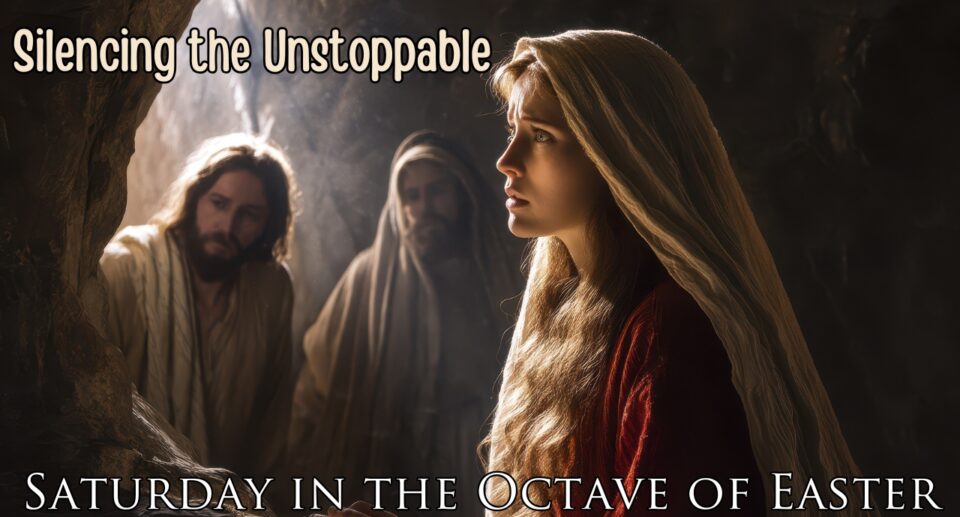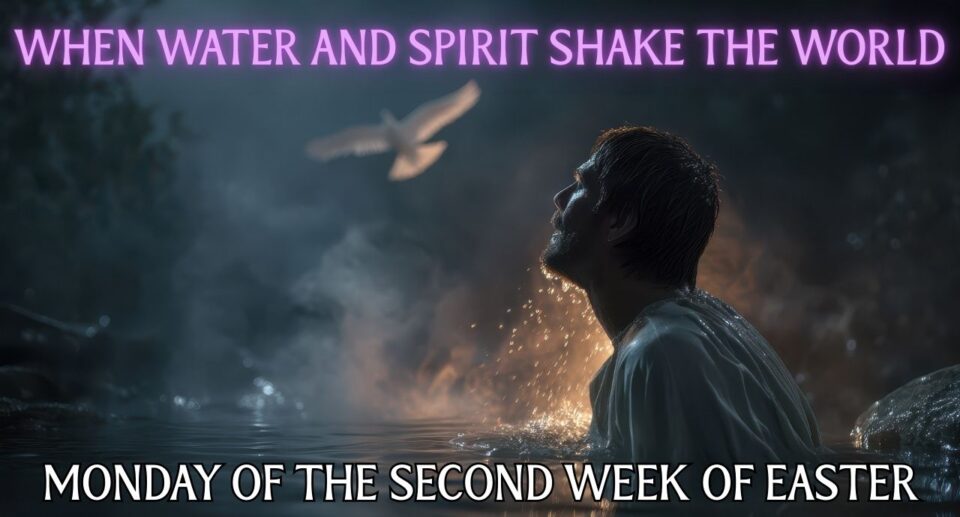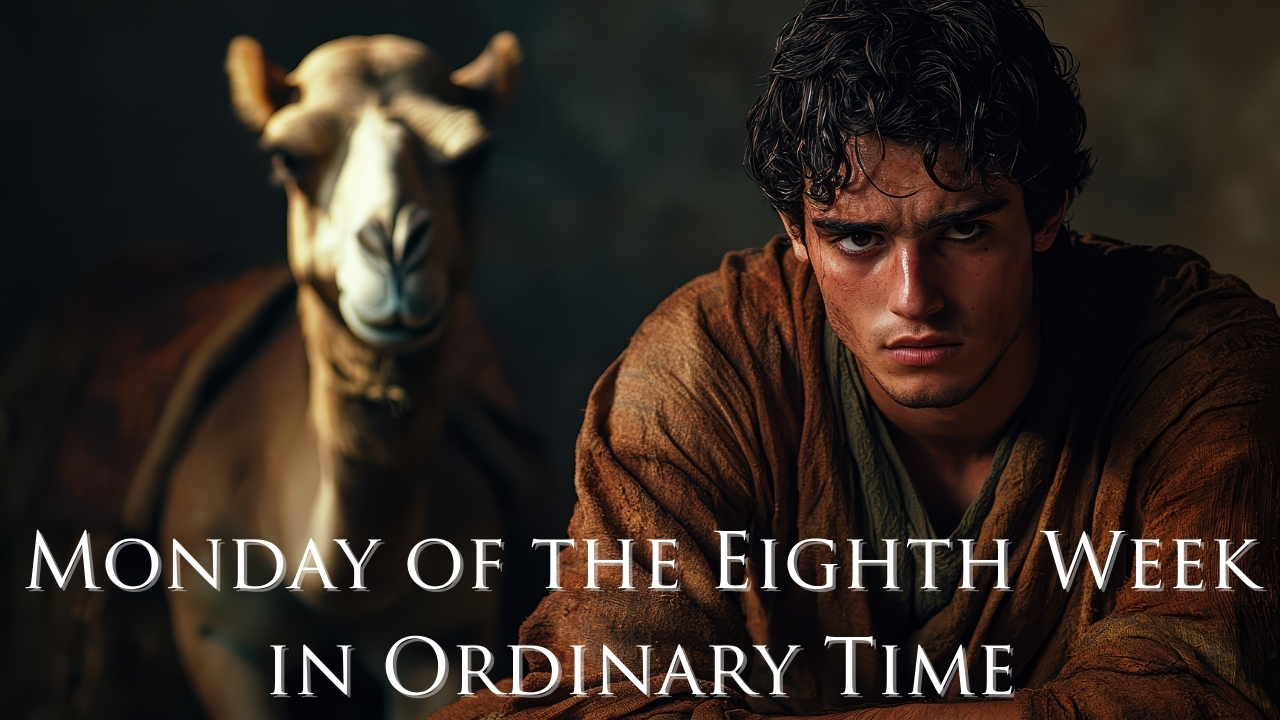Unlocked Doors: When Wounds Become Witnesses | Divine Mercy Sunday Readings | April 27, 2025

What if our deepest wounds could become our most powerful witnesses? On Divine Mercy Sunday, discover how Christ’s scarred body reveals a mercy that doesn’t just heal our wounds but transforms them into channels of divine life.
In this reflection, you’ll experience:
- Why John fell “as though dead” before the risen Christ he once knew intimately
- What Thomas was really seeking when he asked to touch Jesus’ wounds
- The blessing for those who believe without seeing
- How the ministry of forgiveness flows through transformed wounds
Readings: Acts 5:12-16; Psalm 118:2-4, 13-15, 22-24; Revelation 1:9-11a, 12-13, 17-19; John 20:19-31
#DivineMercy #HealedWounds #ResurrectionEncounters #TransformingDoubt #ScarsOfGlory
Unlocked Doors: When Wounds Become Witnesses
“I fell at his feet as though dead.”
These words from John—the beloved disciple, the one who had rested his head against Jesus’ chest at the Last Supper—should shock us. This wasn’t a casual reunion between friends. This wasn’t a warm embrace between companions. This was utter collapse before overwhelming glory.
The same John who had walked alongside Jesus for three years, who had seen him hungry, tired, weeping—falls like a corpse before the risen Lord. Terror. Awe. Undoing.
If this was the reaction of the beloved disciple—the one Jesus entrusted with his own mother—how should we approach the risen Christ? So many of us have domesticated Jesus into a comfortable companion, a friendly therapist, a casual friend. We slap high-fives with the One before whom angels hide their faces. We approach casually the Presence that dropped John like a stone.
And what does this glorious, terrifying Christ do? He touches John. Places his right hand upon him. Says, “Do not be afraid.”
The same hand that bears the mark of nails now bears the weight of his friend’s fear.
This is Divine Mercy—not the sentimental, saccharine comfort we often reduce it to, but the collision of human fragility with divine glory, where we discover that the wounds which should condemn us become the very channels of our healing.
Look at Thomas in today’s Gospel. We’ve sanitized his story, turned “Doubting Thomas” into a cautionary tale about insufficient faith. But Thomas wasn’t struggling with intellectual skepticism. He was drowning in grief, in the trauma of watching his teacher die in agony, in the nauseating whiplash of hearing impossible news after his world had collapsed.
“Unless I see the mark of the nails in his hands and put my finger into the nailmarks and put my hand into his side, I will not believe.”
There’s raw anguish here, not cool rationalism. Thomas isn’t asking for empirical evidence; he’s asking to touch the wounds that broke his heart. He’s saying, “I cannot bear another disappointment. I cannot survive another false hope.”
And Jesus—this is everything—Jesus doesn’t lecture Thomas on the virtue of faith. He doesn’t shame him for his doubt. He says, “Put your finger here and see my hands, and bring your hand and put it into my side.”
Touch my wounds. Feel the places where my body was broken.
When the risen Christ appears to his followers, he doesn’t present himself in unscarred perfection. He keeps his wounds. Deliberately shows them. The marks of his execution become the proof of his identity.
Then comes the moment that transforms not just Thomas but all future generations: “Because you have seen me, Thomas, you have believed. Blessed are those who have not seen and have believed.”
With these words, Jesus reaches across time to touch us—we who have never physically seen his wounds, never placed our fingers in his side, never witnessed his resurrection firsthand. He pronounces a special blessing on our faith—not a second-class faith, but one that in some mysterious way surpasses even the eyewitness testimony of those first disciples.
This is divine mercy extended beyond the upper room, beyond Jerusalem, beyond the first century—mercy that reaches through millennia to touch our own doubts, our own wounds, our own need for encounter with the living Christ.
But Jesus doesn’t stop with Thomas’s personal transformation. Immediately after this, he breathes on all the disciples and says, “Receive the Holy Spirit. Whose sins you forgive are forgiven them, and whose sins you retain are retained.”
This isn’t incidental. On this same day when Thomas moves from doubt to devotion, Jesus establishes the ongoing ministry of forgiveness. The mercy that healed Thomas’s doubt now flows outward through the community he joins. The wounds that convinced Thomas now become channels through which divine forgiveness reaches others who will never physically see or touch them.
Why does divinity preserve its scars?
Perhaps because our deepest wounds become our truest witnesses. Because the places where we’ve been broken open become the channels where divine light floods in.
We see this embodied in the Acts reading, where the apostles who had hidden behind locked doors now stand in public squares performing “wonders and signs.” Peter—who had denied even knowing Jesus as he warmed his hands by a charcoal fire—now has a shadow so charged with healing power that people drag the sick into the streets hoping his mere silhouette might touch them.
What transformed these terrified men? Not a concept, not a doctrine, but an encounter with wounds they couldn’t explain—wounds that should have meant defeat but somehow flowed with life. And now through their hands, through their words, even through their shadows, that same mercy reaches outward, extending forgiveness and healing to others.
“The stone which the builders rejected has become the cornerstone,” sings our psalm.
We are all, in some way, those builders. We reject what appears broken, discard what seems flawed, and then stand astonished when God uses precisely those rejected elements as the foundation of new creation.
We think Divine Mercy means God overlooking our wounds, working around our brokenness. But these readings suggest something far more radical: God works through our wounds, transforms them into witnesses, uses them as the very channels of healing power.
Thomas touches the wounds of Christ and declares, “My Lord and my God!” It is the most complete confession of faith in all the Gospels.
John lies as though dead before the overwhelming presence, and feels the right hand of the Living One touch him with the words, “Do not be afraid.”
The apostles who once cowered in locked rooms now stand before the same authorities who executed their teacher and announce without flinching, “We must obey God rather than men.”
This is the pattern of Divine Mercy: our wounds becoming witnesses, our scars becoming sacred channels, our brokenness becoming the very place divine light pours through.
The world is full of living testimonies to this truth. Consider those who have lost children to addiction, who then create ministries of healing and recovery. Their devastating wounds become their most powerful witnesses. Their grief opens channels of compassion that theory alone could never produce.
We see it in survivors of trauma who eventually find themselves drawn to counsel others along similar paths. There’s a quality of tenderness that can only come from someone who has both been broken and been healed—a wisdom that books cannot teach. The wounded places, when surrendered to divine mercy, often become the very sources of life-giving ministry.
What wounds are you hiding today? What broken places have you decided are beyond redemption? What painful scars have you determined can never be anything but ugly?
Divine Mercy challenges us to rethink everything we believe about our woundedness.
Jesus doesn’t hide his scars; he leads with them. “Look at my hands and my feet,” he says elsewhere. The marks of his torture become the proof of his victory. The very wounds that should have been shameful become glorious.
Perhaps true healing isn’t the absence of scars but their transformation. Perhaps the most convincing witnesses aren’t those who’ve never been wounded, but those whose wounds now pulse with resurrection life.
And perhaps the most profound mercy isn’t God waving away our sins, but God entering our wounds and breathing new life into them, just as Jesus breathed on his disciples and said, “Receive the Holy Spirit. Whose sins you forgive are forgiven them.”
This is the revolutionary ministry of forgiveness Christ established in that upper room—not a mechanical transaction of guilt removed, but a living transmission of mercy that flows through the wounds of the forgiven to reach others still trapped in darkness.
The doors were locked, but Jesus came anyway. That’s Divine Mercy. Thomas doubted, and Jesus showed him his scars. That’s Divine Mercy. John collapsed in terror, and the glorious One touched him saying, “Do not be afraid.” That’s Divine Mercy.
Your wounds—yes, even those—can become witnesses. Your scars—yes, even those—can become sacred channels. Your broken places—yes, even those—can become where divine light floods through.
For the One who holds the keys to death and the netherworld knows what it is to be wounded. And he has kept his scars.
Like Thomas, we are invited to touch those wounds—if not physically, then spiritually—and find ourselves transformed from doubt to devotion. Like the disciples, we are called to receive the breath of forgiveness and then exhale that same mercy into a world gasping for grace.
“Blessed are those who have not seen and have believed.” That’s us. We who walk by faith, not by sight. We who trust based on testimony rather than touch. We who believe without seeing the wounds that Thomas saw.
Yet in another sense, perhaps we do see those wounds—in the broken lives restored around us, in the scarred souls made beautiful by grace, in our own transformed wounds that once seemed beyond healing.
This is Divine Mercy Sunday, when we celebrate not just a historical moment when Thomas touched Christ’s wounds, but the ongoing reality that Christ’s wounded mercy continues to touch us.






